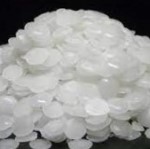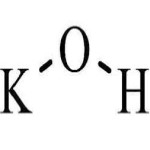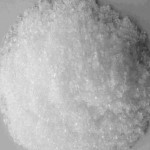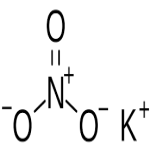Caustic Potash or Potassium Hydroxide Pellets Tablets Pearls Powder USP NF BP Ph Eur IP Reagent FCC Food Grade & Potassium Nitrate USP BP Ph Eur IP Reagent FCC Food Grade Suppliers Exporters, Manufacturers
Potassium Hydroxide Pellets
CAS Number: 1310-58-3 Caustic Potash Pellets Tablets Pearls Powder USP NF BP Ph Eur IP Reagent FCC Food Grade Suppliers Exporters, Manufacturers

Specifications of Potassium Hydroxide USP NF Grade
KOH --- 56.11 --- CAS 1310-58-3.
Potassium Hydroxide contains not less than 85.0 percent of total alkali, calculated as KOH, including not more than 3.5 percent of K2CO3.
Identification: A solution (1 in 25) responds to the tests for Potassium.
Insoluble substances: Dissolve 1 g in 20 mL of water: the solution is complete, clear, and colorless.
Heavy metals: Dissolve 0.67 g in a mixture of 5 mL of water and 7 mL of 3 N hydrochloric acid. Heat to boiling, cool, and dilute with water to 25 mL: the limit is 0.003%.
Specifications of Potassium Hydroxide BP Ph Eur Grade
Caustic Potash
KOH -- 56.11 -- CAS 1310-58-3
DEFINITION
Potassium hydroxide contains not less than 85.0 per cent and not more than the equivalent of 100.5 per cent of total alkali, calculated as KOH.
CHARACTERS
White, crystalline, hard masses, supplied as sticks, pellets or irregularly shaped pieces, deliquescent in air, hygroscopic, absorbing carbon dioxide, very soluble in water, freely soluble in alcohol.
IDENTIFICATION
A. Dissolve 0.1 g in 10 ml of water (this solution is used for identification test B). Dilute 1 ml of the solution to 100 ml with water. The pH of this solution is not less than 10.5.
B. 1 ml of the initial solution prepared in identification test A gives reaction of potassium.
TESTS
Solution S1: Dissolve 2.5 g in 10 ml of water. Carefully add 2 ml of nitric acid, with cooling, and dilute to 25 ml with dilute nitric acid.
Solution S2: Dissolve 10 g in 15 ml of distilled water. Carefully add 12 ml of hydrochloric acid, with cooling, and dilute to 50 ml with dilute hydrochloric acid.
Appearance of solution: Dissolve 5 g in carbon dioxide-free water and dilute to 50 ml with the same solvent. The solution is clear and colourless.
Carbonates: Not more than 2.0 per cent, calculated as K2CO3.
Chlorides: Dilute 10 ml of solution S1 to 15 ml with water. The solution complies with the limit test for chlorides (50 ppm).
Phosphates: Dilute 5 ml of solution S1 to 100 ml with water. The solution complies with the limit test for phosphates (20 ppm).
Sulphates: 15 ml of solution S2 complies with the limit test for sulphates (50 ppm).
Aluminium: If intended for use in the manufacture of hem dialysis solutions, it complies with the test for aluminium. Dissolve 20 g in 100 ml of water and add 10 ml of acetate buffer solution pH 6.0. The solution complies with the limit test for aluminium (0.2 ppm). Use as the reference solution a mixture of 2 ml of aluminium standard solution (2 ppm Al), 10 ml of acetate buffer solution pH 6.0 and 98 ml of water. To prepare the blank use a mixture of 10 ml of acetate buffer solution pH 6.0 R and 100 ml of water.
Iron: Dilute 5 ml of solution S2 to 10 ml with water R. The solution complies with the limit test for iron (10 ppm).
Sodium: Not more than 1.0 per cent of Na, determined by atomic absorption spectrometry.
Heavy metals: Dilute 10 ml of solution S2 to 20 ml with water. 12 ml of the solution complies with limit test A for heavy metals (10 ppm). Prepare the standard using lead standard solution (1 ppm Pb).
Specifications of Potassium Hydroxide FCC Food Grade
Caustic Potash
KOH Formula wt 56.11
INS: 525 CAS: 1310-58-3
DESCRIPTION
Potassium Hydroxide occurs as white or nearly white pellets, flakes, sticks, fused masses, or other forms. Upon exposure to air, it readily absorbs carbon dioxide and moisture, and it deliquesces. One gram dissolves in 1 mL of water, in about 3 mL of alcohol, and in about 2.5 mL of glycerin. It is very soluble in boiling alcohol.
Function: pH control.
REQUIREMENTS
Identification: A 1:25 aqueous solution gives positive tests for Potassium.
Assay: Not less than 85.0% and not more than 100.5% of total alkali, calculated as KOH.
Carbonate (as K2CO3): Not more than 3.5%.
Insoluble Substances: Passes test.
Lead: Not more than 2 mg/kg.
Mercury: Not more than 0.1 mg/kg.
Specifications of Potassium Hydroxide Analytical Reagent Grade
KOH
Formula Wt 56.11
CAS Number 1310-58-3
NOTE. Reagent potassium hydroxide usually contains 10-15% water.
REQUIREMENTS
Assay and potassium carbonate: 85% KOH and 2.0% K2CO3
MAXIMUM ALLOWABLE
Chloride (Cl): 0.01%
Nitrogen compounds (as N): 0.001%
Phosphate (PO4): 5 ppm
Sulfate (SO4): 0.003%
Ammonium hydroxide precipitate: 0.02%
Heavy metals (as Ag): 0.001%
Iron (Fe): 0.001%
Nickel (Ni): 0.001%
Sodium (Na): 0.05%.

Potassium Nitrate
CAS Number: 7757-79-1 Crystals Pearls USP BP Ph Eur IP Reagent FCC Food Grade Suppliers Exporters, Manufacturers

Please visit Safety Data Sheet of Potassium Nitrate Crystals Pearls USP BP Ph Eur IP Reagent FCC Food Grade Manufacturers.
Specifications of Potassium Nitrate USP Grade
KNO3 101.10
CAS 7757-79-1.
Potassium Nitrate contains not less than 99.0 percent and not more than 100.5 percent of KNO3.
Identification: A solution of it responds to the tests for Potassium and for Nitrate.
Chloride: A 500-mg portion of it shows no more chloride than corresponds to 0.21 mL of 0.020 N hydrochloric acid (0.03%).
Sulfate: Dissolve 100 mg of Potassium Nitrate in 10 mL of water, add 15 mL of 6 N hydrochloric acid, and evaporate to dryness on a steam bath. To the residue so obtained add 7 mL of 6 N hydrochloric acid, and evaporate to dryness on a steam bath. Dissolve the residue so obtained in about 35 mL of water and, if necessary, neutralize with hydrochloric acid using litmus paper indicator. Filter, if necessary, to obtain a clear test solution. This test solution shows no more sulfate than corresponds to 0.10 mL of 0.020 N sulfuric acid (0.1%).
Arsenic: 3 ppm.
Lead: A solution of 0.5 g of it in 20 mL of water contains not more than 5 4g of lead (corresponding to not more than 0.001% of Pb).
Heavy metals: 0.002%.
Iron: not more than 0.001%.
Limit of sodium: the limit is 0.1%.
Limit of nitrite: To pass the test.
Specifications of Potassium Nitrate BP Ph Eur Grade
KNO3 -- 101.1 -- CAS 7757-79-1
DEFINITION
Potassium nitrate contains not less than 99.0 per cent and not more than the equivalent of 101.0 per cent of KNO3, calculated with reference to the dried substance.
CHARACTERS
A white, crystalline powder or colourless crystals, freely soluble in water, very soluble in boiling water, practically insoluble in alcohol.
IDENTIFICATION
A. It gives the reaction of nitrates.
B. Solution S (see Tests) gives the reactions of potassium.
TESTS
Solution S: Dissolve 10.0 g in carbon dioxide-free water prepared from distilled water and dilute to 100 ml with the same solvent.
Appearance of solution: Solution S is clear and colourless.
Acidity or alkalinity: To 10 ml of solution S add 0.05 ml of bromothymol blue solution. Not more than 0.5 ml of 0.01 M hydrochloric acid or 0.01 M sodium hydroxide is required to change the colour of the indicator.
Reducible substances: To 10 ml of solution S, add 0.5 ml of dilute sulphuric acid and 2 ml of zinc iodide and starch solution. The solution does not become blue within 2 min.
Chlorides: If intended for ophthalmic use, it complies with the test for chlorides. Dissolve 2.5 g in water and dilute to 15 ml with the same solvent. The solution complies with the limit test for chlorides (20 ppm).
Sulphates: Dilute 10 ml of solution S to 15 ml with distilled water. The solution complies with the limit test for sulphates (150 ppm).
Ammonium: 1 ml of solution S complies with the limit test (A) for ammonium (100 ppm). If intended for ophthalmic use, not more than 50 ppm of ammonium.
Calcium: Dilute 10 ml of solution S to 15 ml with distilled water. The solution complies with the limit test for calcium (100 ppm). If intended for ophthalmic use, not more than 50 ppm of calcium.
Iron: Dilute 5 ml of solution S to 10 ml with water. The solution complies with the limit test for iron (20 ppm). If intended for ophthalmic use, not more than 10 ppm of iron.
Sodium: Not more than 0.1 per cent of Na, determined by atomic emission spectrometry.
Heavy metals: 12 ml of solution S complies with limit test A for heavy metals (10 ppm).
Loss on drying: Not more than 0.5 per cent determined on 1.000 g by drying in an oven at 100CC to 105C.
Specifications of Potassium Nitrate FCC Food Grade
KNO3 Formula weight 101.10
INS: 252 CAS: 7757-79-1
DESCRIPTION
Potassium Nitrate occurs as colorless, transparent prisms, as white granules, or as a white, crystalline powder. It is slightly hygroscopic in moist air. One gram dissolves in 3 mL of water at 25°, in 0.5 mL of boiling water, and in about 620 mL of alcohol. Its solutions are neutral to litmus.
Function: Antimicrobial agent; preservative.
REQUIREMENTS
Identification: A 1:10 aqueous solution gives positive tests for Potassium and Nitrate.
Assay: Not less than 99.0% and not more than 100.5% of KNO3 after drying.
Chlorate: Sprinkle about 100 mg of dry sample on 1 mL of sulfuric acid. The mixture does not turn yellow.
Lead: Not more than 4 mg/kg.
Loss on Drying: Not more than 1%.
Specifications of Potassium Nitrate Analytical Reagent
KNO3
Formula Wt 101.10
CAS Number 7757-79-1
REQUIREMENTS
Assay: 99.0% KNO3
pH of a 5% solution: 4.5-8.5 at 25C
MAXIMUM ALLOWABLE
Insoluble matter: 0.005%
Chloride (Cl): 0.002%
Iodate (IO3): 5 ppm
Nitrite (NO2): 0.001%
Phosphate (PO4): 5 ppm
Sulfate (SO4): 0.003%
Heavy metals (as Pb): 5 ppm
Iron (Fe): 3 ppm
Calcium (Ca): 0.005%
Magnesium (Mg): 0.002%
Sodium (Na): 0.005%.

Please visit Hazard Statement of Potassium Nitrate Crystals Pearls USP BP Ph Eur IP Reagent FCC Food Grade Suppliers.
Caustic Potash or Potassium Hydroxide Pellets CAS Number 1310-58-3 & Potassium Nitrate CAS Number 7757-79-1 Supplier Exporter, Manufacturer:
Annie Chemie P Ltd
Mumbai 4000010, INDIA
With Agents and offices in UAE, USA, Europe.
e-mail: info@anniechemie.com
Copyright and Usual Disclaimer is Applicable.
June 1, 2025
Exporters to USA, Canada, UK, Europe, UAE, Nigeria, Algeria, Turkey, Mexico, Brazil, Chile, Argentina, Australia, Dubai etc.
Perfection is made up of small things and that is a big thing.
